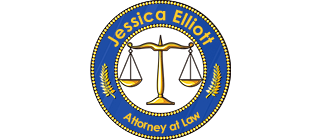The Google algorithm search leak gave us unique insights into how Google uses links to better understand your content. By adding the transcript near your video, you are offering Google a ton more content to crawl, which can significantly impact your rankings. The goal is to improve the value of your content with multimedia usage and ensure that the page loads quickly for a better overall page experience. Think of it as if the user should read your content, see the image, and understand EXACTLY what you are trying to communicate. Unlike the old Google Analytics, GA4 is designed to track user experience and engagement much better. Most people underestimate the importance of user experience and engagement in SEO.
That can lead to higher rankings for relevant keywords as well. Search engine bots also crawl alt text to better understand your images, which gives you the added benefit of providing better image context to search engines. Just ensure that your alt descriptions reads naturally for people, and avoid stuffing keywords for search engines. The anchor text sends signals to search engines regarding the content of the destination page.
People often use variations of a search term although they have the same user intent. Research the topic thoroughly and make sure you understand the search intent of the keyword (or topic) you’re targeting. Using header tags for your subheadings allows search engines to build a clear picture of your page, and the sub-topics you’ve written about. At the end of this on page SEO checklist, you’ll find the five most important on-page factors to get your website ranking highly in the search results. For instance, if in your article about “how to become a freelance writer” but you never use the subheading with your keywords, your post is unlikely to rank. So even if you’ve written an informative post, but haven’t used your subheadings properly, few people will find your article on search engine result pages.
A medical article needs professional language, while a cooking blog can be more conversational. If someone asks “what is concept” give the definition immediately. Check out our dedicated SEO Anomaly guide for more advice on creating SEO-friendly URLs. So if your goal is to increase sales, “blue flowers” might not be the keyword for you.
Image Optimization
Backlinks, on the other hand, only give a slight indication of what the on-page content is all about. H1 tags are important, but they’re not the most important element on a website or in a piece of content. In 2015, Google introduced Rankbrain, an element of Google’s core algorithm that uses machine learning to match search queries to relevant results. By using machine learning, Google can determine the true intent of the user. Rankbrain gives Google the ability to deliver even more accurate results than with the Hummingbird update. After the Hummingbird update in 2013, Google was able to do a much better job at matching search queries to more relevant results.
- Specifically, we’re going to tap into 3 link building strategies that are working really well right now.
- But feel free to keep the checklist open so you can follow along.
- Keyword tools can help you find relevant keywords in your industry to target.
- This is when you excessively repeat keywords or key phrases in your content with the intention of manipulating search engine rankings.
- Let us help your business find the best tools and solutions to thrive and grow.
For example, you can see these results with the metadata when you search on Google. To maximize your click-through rate, ensure the metadata is optimized and close to your written content. Tools like AIOSEO’s on-page content analysis features create a report instantly based on your existing content to suggest improvements, SEO scores, and new ideas. Link building is generally considered an Off-Page SEO strategy. However, internal linking, since it’s part of your content creation process and is on the webpage, is always part of your on-page strategy.
Use a descriptive and optimized URL
Implement hreflang tags to direct users to the appropriate language or regional version of your content. Users don’t want to wait for pages to load, so Google tends to rank fast-loading sites higher. If you’re unsure how fast (or slow) your site is, check out your Core Web Vital scores using the report in Google Search Console. This helpful tool will point out areas where your site speed can be improved so you know what to work on.
Use images and alt-text
This step is all about keyword-optimizing your content for SEO. Every now and again a blogger will mention “link building” in a post. Well, you need to figure out why people link to specific pieces of content in your industry.
A well-crafted URL structure helps your on-page SEO — it’s like giving your web pages a good road map. Think of it as a friendly address that guides search engines and invites users to explore your content. Creating SEO-friendly URLs makes it easier for humans and search engines to understand what your page is all about. Opt for concise and descriptive URLs that include relevant keywords, as they provide a clear signpost. A clean and organized URL structure enhances navigation, making it easier for everyone to understand your website.
SEO, or Search Engine Optimization, is a digital marketing strategy aimed at improving your website’s visibility on search engines like Google. By optimizing your site for search engine algorithms, you can attract more organic traffic, enhance user experience, and build credibility. To optimize images for on-page SEO, ensure they are appropriately compressed for faster loading times, use descriptive filenames, and provide informative alt tags. By doing so, you can enhance both the user experience and the visibility of your web pages in search engine results.










What do you think?